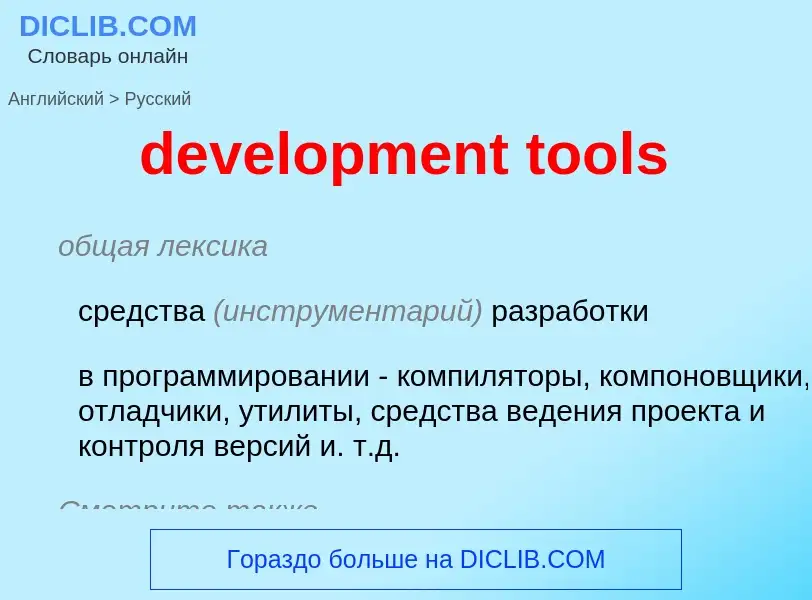Translation and analysis of words by ChatGPT artificial intelligence
On this page you can get a detailed analysis of a word or phrase, produced by the best artificial intelligence technology to date:
- how the word is used
- frequency of use
- it is used more often in oral or written speech
- word translation options
- usage examples (several phrases with translation)
- etymology
development tools - translation to English
общая лексика
средства (инструментарий) разработки
в программировании - компиляторы, компоновщики, отладчики, утилиты, средства ведения проекта и контроля версий и. т.д.
Смотрите также
общая лексика
программное средство, инструментальное ПО
любая программа или утилита, используемая программистом для проектирования, разработки или отладки другого ПО
Смотрите также
вычислительная техника
инструментарий
Definition
Wikipedia
A programming tool or software development tool is a computer program that software developers use to create, debug, maintain, or otherwise support other programs and applications. The term usually refers to relatively simple programs, that can be combined to accomplish a task, much as one might use multiple hands to fix a physical object. The most basic tools are a source code editor and a compiler or interpreter, which are used ubiquitously and continuously. Other tools are used more or less depending on the language, development methodology, and individual engineer, often used for a discrete task, like a debugger or profiler. Tools may be discrete programs, executed separately – often from the command line – or may be parts of a single large program, called an integrated development environment (IDE). In many cases, particularly for simpler use, simple ad hoc techniques are used instead of a tool, such as print debugging instead of using a debugger, manual timing (of overall program or section of code) instead of a profiler, or tracking bugs in a text file or spreadsheet instead of a bug tracking system.
The distinction between tools and applications is murky. For example, developers use simple databases (such as a file containing a list of important values) all the time as tools. However a full-blown database is usually thought of as an application or software in its own right. For many years, computer-assisted software engineering (CASE) tools were sought after. Successful tools have proven elusive. In one sense, CASE tools emphasized design and architecture support, such as for UML. But the most successful of these tools are IDEs.

